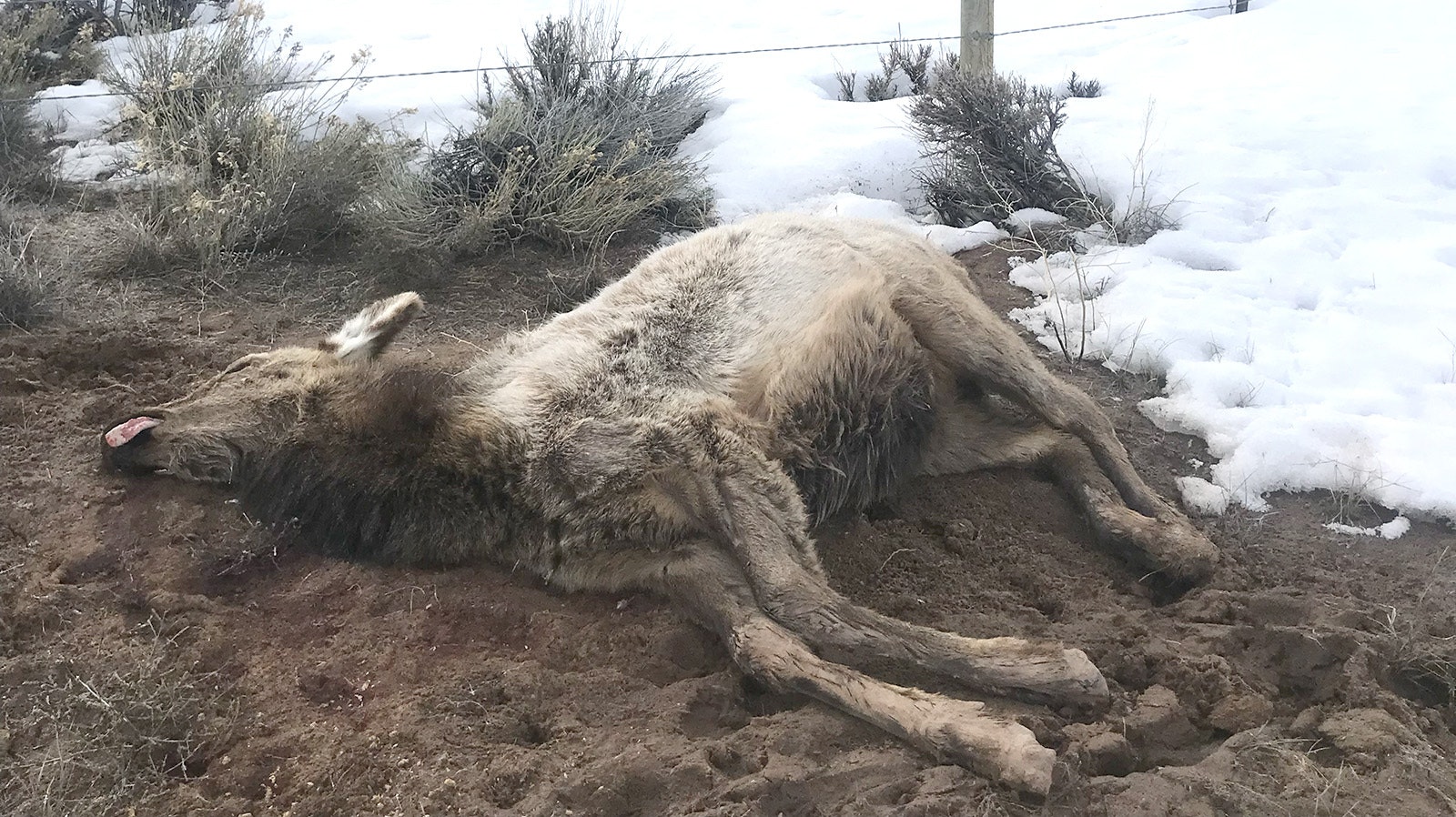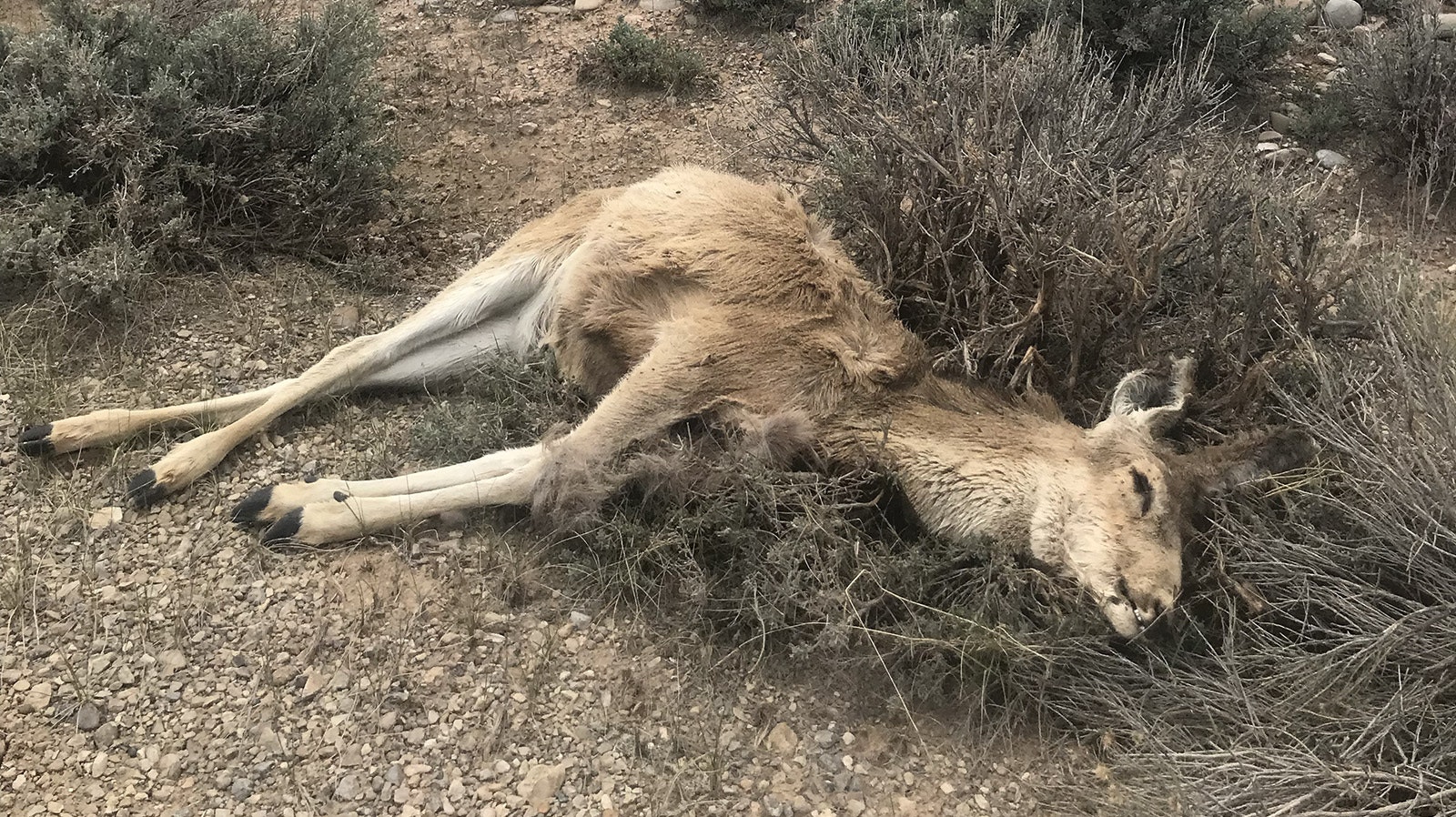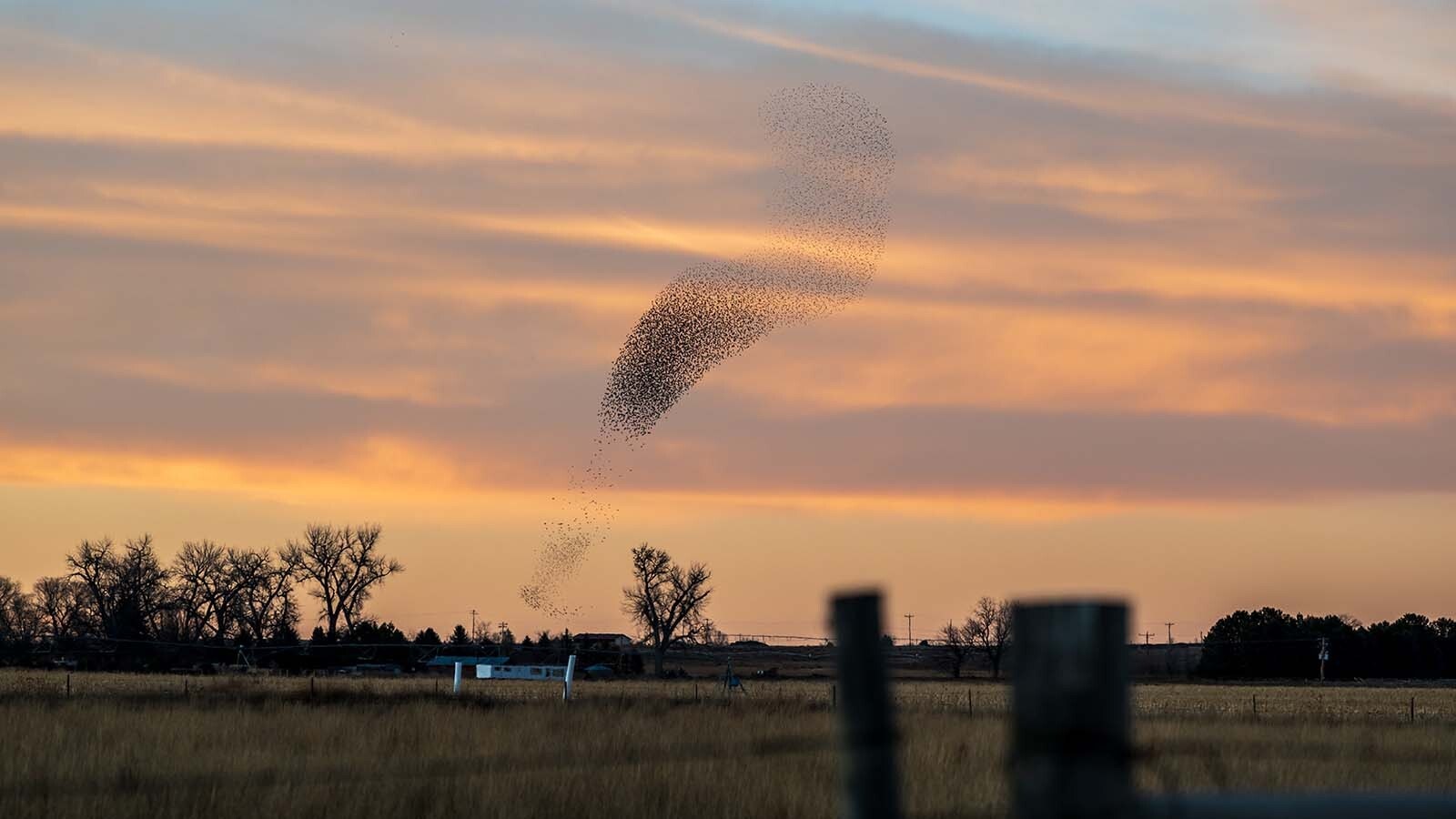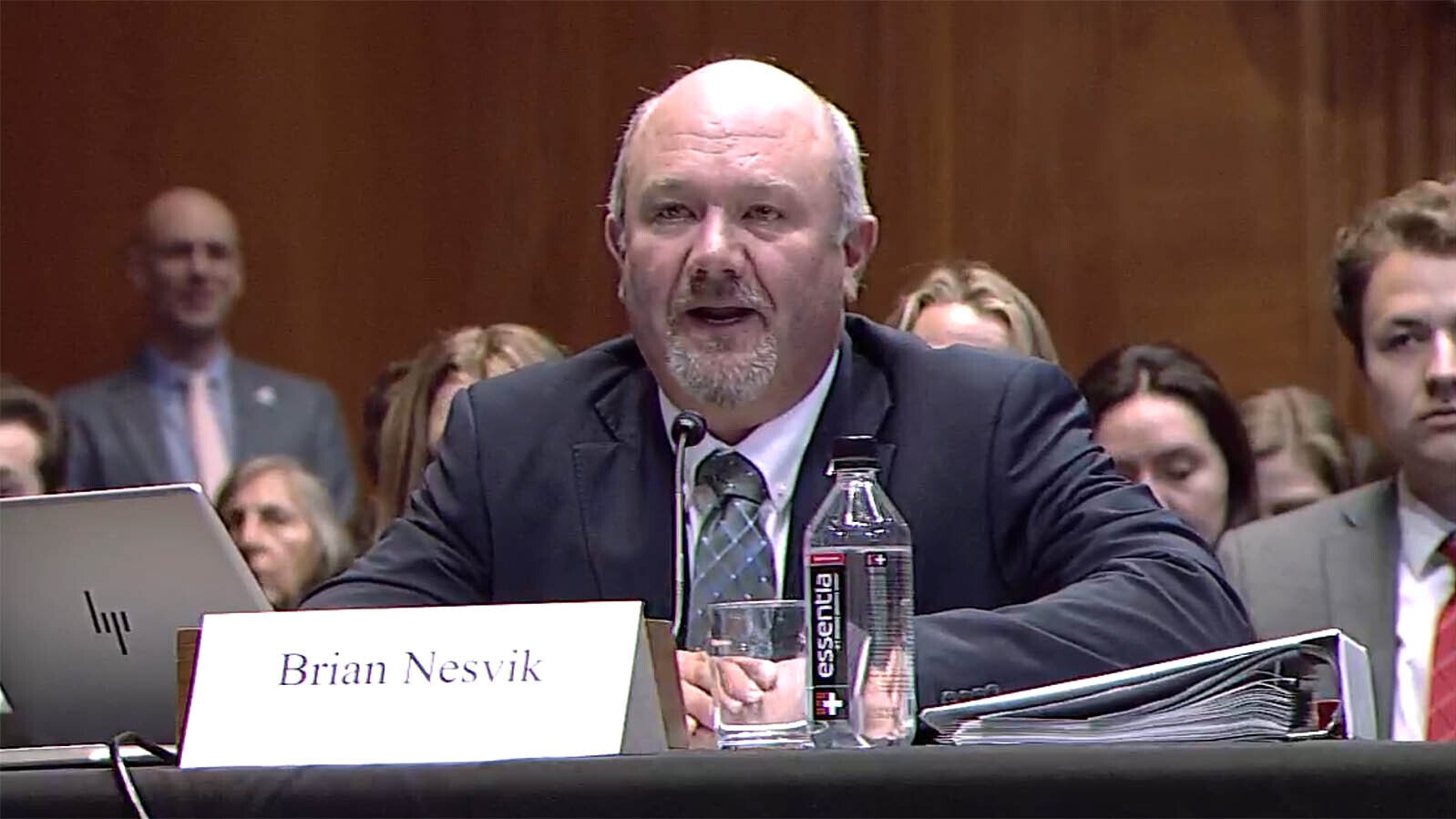The retreat of snow across vast expanses sprawling out from the Wyoming Range is usually a cause for cautious optimism at the thought of winter releasing its grip.
Not so much this year.
This year, winter’s withdraw is uncovering the sheer magnitude of suffering and death the vicious season brought upon big game herds, like a murder’s obscene secrets finally laid bare.
Gruesome Tally At Landfill
At the Sublette County Landfill, at least 1,500 carcasses had been dropped off as of this week, and more are sure to come, Mike Schmid of La Barge told Cowboy State Daily on Wednesday.
“I just left the Sublette County Landfill near Big Piney. I spoke with the operator and he told me they have covered up the piles of carcasses because of the odor,” he said.
“He did elaborate and said it was ‘sad and sickening’ how many dumpsters of dead pronghorn and mule deer he has seen come in,” Schmid added. “He said Game and Fish even brought in one load of elk that numbered 75 in total.”
And those are just the carcasses found near roads, the ones that were easiest to find and recover.
There’s no telling how many more dead and dying animals are scattered across the open range, Schmid said.

Disease And Starvation
In the Jonah Field amid natural gas wells, antelope suffered a one-two punch. Drifting, hard-crusted snow made it nearly impossible for them to move around or paw through to reach forage.
And early this year, they were hit with a rare strain of pneumonia. https://cowboystatedaily.com/2023/03/08/rare-pneumonia-has-killed-200-wyoming-antelope-so-far/
As the snow retreats, energy companies, the Bureau of Land Management and the Wyoming Game and Fish Department have collaborated to do carcass removal.
Paul Ulrich of Pinedale, vice president of Jonah Energy, said his company helped collect antelope carcasses along service roads and around wells in the Jonah Field.
Game and Fish agents examined some of the carcasses, which tested positive for pneumonia, he told Cowboy State Daily.
Legendary Deer Herd Just Keeps Shrinking
The Wyoming Range mule deer herd is legendary, but it’s been hit hard, Schmid said. He can remember when the herd numbered as many as 60,000 deer. In recent years, partly because of disease and previous winterkills, its diminished to about 29,000.
And now as many as half of those deer could be dead, he said.
Deer carcasses are scattered along oil and gas well service roads near La Barge and Big Piney, Schmid said. His company, SOS Well Services, has also helped with carcass collection.
“There’s dead deer all over the place,” he said.
The roads are plowed during the winter. So, deer and other animals gravitated to the roads, trying to escape the snow. However, since their forage was buried, they ended up starving by the roadside or were sometimes struck and killed by vehicles, he said.
‘I’m Such A Proponent Of These Wildlife Crossings’
It’s been a similar story along U.S. Highway 189, Schmid said.
The Wyoming Department of Transportation is working on nine wildlife underpasses on the highway between La Barge and Big Piney.
The project should be finished by October, and that will be none too soon, Schmid said. WYDOT estimates that about 150 deer are struck and killed every year along that stretch of U.S. 189.
The actual number of roadkill deer is probably much higher, Schmid said. Many hits go unreported by drivers. Mangled deer also sometimes flee some distance before they die.
“There’s a lot that get it and make it over the highway right of way fence and die of internal injuries, so they’re not found and counted,” he said.
Schmid said he appreciates WYDOT’s work on the underpasses.
“I’m such a proponent of these wildlife crossings,” he said. “My wish is that crossings could be factored right into the design of our roads.”
Cut Back On Hunting
Schmid is a former member of the Wyoming Game and Fish Commission, which sets the state’s hunting seasons and tag allocations.
He said he was happy to see the commission make deep cuts to antelope tag allocations for this fall’s hunting seasons.
He’d also like to see remaining “Type 1” (any antelope) tags designated for “bucks only.”
“Changing the language on that to make those ‘buck only’ tags would remove the temptation for people to shoot doe antelope to fill their tags,” Schmid said.
Zach Key of La Barge, the area manager for SOS Well Service, has also initiated the “let a deer walk” campaign through which deer hunters can leave their tags unfilled and instead mail them in to enter a prize drawing.
Long-Term Plan
Even as carcasses pile up at the landfill, it’s important to think of the future and how habitat improvement will help the herds bound back, Ulrich said.
Jonah Energy has habitat reclamation and improvement programs for big game animals and sage grouse in the Jonah Field, he said.
Ulrich said he and his family also plan to skip out on antelope hunting this year, to give the herds time to rest and recover.
“Progress is being made. It’s important for us in Lincoln and Sublette counties to remain vigilant and do what we can to help wildlife,” he said.
Mark Heinz can be reached at Mark@CowboyStateDaily.com.





